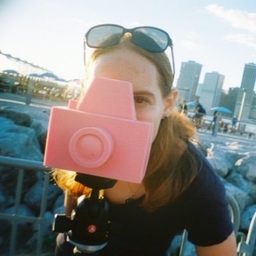
Laura Geggel
Editor at Live Science
I'm a transplanted Seattleite living in New York who writes and edits for @LiveScience. Tweets are my own. https://t.co/v4TDWyTQxc
Articles
-
3 weeks ago |
livescience.com | Laura Geggel
An amateur metal detectorist has discovered a 1,000-year-old gold Viking arm-ring — a piece of craftsmanship created by braiding together eight gold rods — that was snipped apart, likely to help its owner cover costs during financial transactions. The arm-ring was found by Ronald Clucas this spring on the Isle of Man, an island in the Irish Sea between Britain and Ireland.
-
1 month ago |
livescience.com | Laura Geggel
Birds have run, swum and flown around Earth since the dinosaur age, and they've hunted for food and raised their fuzzy chicks for generation after generation. These feathery creatures now live on every continent, sometimes migrating thousands of miles to seasonal destinations. You can often hear their birdsong as they trill, chirp and whistle, thanks to the syrinx, a vocal organ that has two independent sound sources, unlike the single one found in humans.
-
1 month ago |
livescience.com | Laura Geggel
Archaeologists in Israel have discovered a 2,300-year-old gold ring set with a red gemstone — likely a garnet — that a youngster may have ritually buried as they left behind childhood and transitioned into adulthood. The small ring dates to the Hellenistic, or Greek, period, and was found in the City of David in the Jerusalem Walls National Park. This is the second gold ring from the early Hellenistic period that archaeologists have found there in less than a year.
-
1 month ago |
livescience.com | Laura Geggel
Archaeologists in Israel have unearthed three 1,500-year-old Christian burials that contain very rare figurines crafted from ebony and bone and depict people from Africa. The figurines — which were likely worn as pendants — might depict these individuals' ancestors, researchers wrote in a new study, which was published in the most recent 2025 issue of the journal 'Atiqot.
-
1 month ago |
livescience.com | Laura Geggel
In Birka, Sweden, there is a roughly 1,000-year-old Viking burial teeming with lethal weapons — a sword, an ax-head, spears, knives, shields and a quiver of arrows — as well as riding equipment and the skeletons of two warhorses. Nearly 150 years ago, when the grave was unearthed, archaeologists assumed they were looking at the burial of a male warrior. But a 2017 DNA analysis of the burial's skeletal remains revealed the individual was female.
Journalists covering the same region

Peter Terzian
Features Editor at Travel + Leisure
Peter Terzian primarily covers news in Edinburgh, Scotland, United Kingdom and surrounding areas.

Bailey Kircher
Senior Social Media Manager at The Female Quotient
Bailey Kircher primarily covers news in San Francisco, California, United States and surrounding areas.
Eddi Fiegel
Travel Writer and Journalist at Freelance
Eddi Fiegel primarily covers news in Orlando, Florida, United States and surrounding areas.

Toby Luckhurst
News Report and Producer at BBC World
Toby Luckhurst primarily covers news in Kyiv, Ukraine and surrounding areas.
Chantal Haines
Editor at Marine Industry News
Chantal Haines primarily covers news in the South Coast region of England, including areas like Southampton and surrounding coastal towns.
Try JournoFinder For Free
Search and contact over 1M+ journalist profiles, browse 100M+ articles, and unlock powerful PR tools.
Start Your 7-Day Free Trial →Coverage map
X (formerly Twitter)
- Followers
- 3K
- Tweets
- 4K
- DMs Open
- No

RT @GNavalon: Tired of flattened early bird fossils? Today is your lucky day. Very happy to finally welcome 'Navaornis hestiae' to the wo…

RT @ksbw: HOLY GUACAMOLA: A large school of sunfish (Mola Mola) was seen on a field trip at Breakwater Cove in Monterey over the weekend. #…

RT @Marghe_Writes: I LOVE writing about Pompeii, so thank you to my @LiveScience editor @LauraGeggel for throwing this story my way. Check…

